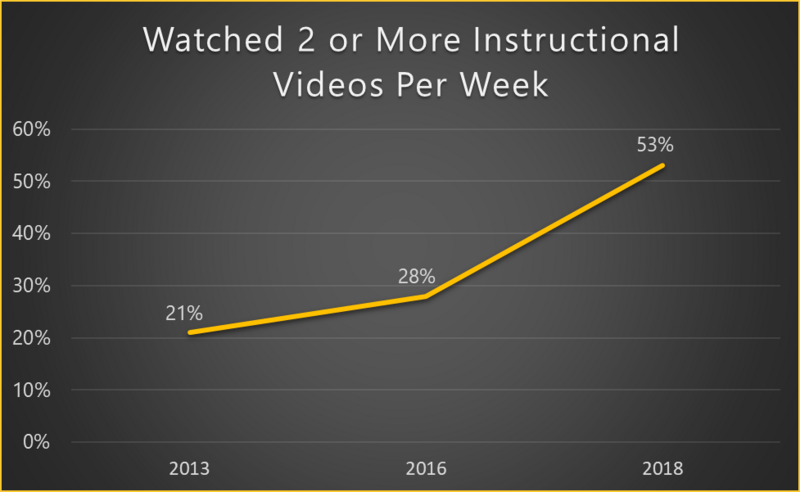ATD Blog
4 Tricks to Keep Video Costs in Check
Mon Dec 09 2019

The role of video in learning organizations has continued to grow during the last five years. Many of the changes came because individuals consume more video weekly than ever before. In fact, a TechSmith study about viewer behaviors performed in 2013, 2016, and 2018, reveals that the number of people watching two or more instructional videos per week has increased by 32 percent.

The demand for instructional video is growing, so we must be ready to meet that requirement to best serve our audiences. However, creating videos with organizational budgets and schedules as they are can be a difficult challenge. These challenges are real but not insurmountable. Let’s look at a few ideas to keep video costs in check.
1. Use the Technology You Have
As you learn about video technology, there are tons of options for cameras, lenses, and gear that can help improve the quality of your productions. However, before you drop a lot of money on new gear, ensure you know what you have and that you’re using it to the fullest extent. For instance, many modern smartphones have excellent camera technology. They won’t give you the same quality as a full-sensor DSLR camera but with some good technique and attention to detail, these cameras can do a good job.
2. Live and Die DIY
Since what you’re creating probably doesn’t need to match the high-quality output of content that you find on Netflix or in the theaters, there’s a lot of space for taking a do-it-yourself approach. The good news is there are a lot of people out there who are teaching film and video skills. Whether you want to learn how to make lights, light a set, frame a scene, sync audio and video, or any of the other many tasks associated with creating an instructional video, there’s probably a video to teach that. Embrace the idea that you don’t have to buy gear or sets to make something that will work for your needs. And if you’re not crafty, no worries—just keep it simple.
3. Chop Time With Preparation
It always seems counterintuitive to spend more time on something to save time, but for creating video, it’s true that preparation saves time. Good preparation should cut down on the amount of time it takes to record a video, but also, it should mean less time figuring out what and how to edit. What do you prep? Well, everything! You should not only write a script and create a storyboard of what each shot will look like, but on the day of the shoot, you should have no questions about what to record or where it gets recorded. Your preparation should guide you so that you’re making as few decisions during the process as possible. You should plan where your video will be hosted and delivered to your audience along with any supporting or contextual information.
4. Make More Videos
After 13 years of creating videos, one thing that I’ve learned is that the more I make, the faster and easier they are to create. This speed and reduced effort will translate to lower costs. I spend less time trying to figure things out, or how to set up the gear. I know better what content is and isn’t going to work and how to put it together. The process of editing is faster. I’ve even noticed that if I go a month or two without creating a video, my skills and abilities get a little rusty and slow me down a bit. Video isn’t always the right solution, but if you know you’re going be creating videos consistently in your role, try to consistently practice and hone your skills to save time and costs.
As you embark or continue on your video creation journey, consider these ways to save time and effort. I’m confident as you practice the craft of creating, you’ll find other budget savers as you create more videos to reach and inspire your audiences.
Want to Learn More?
Join me at ATD TechKnowledge 2020 for the session, "The Good, Bad, and the Awesome: A Video-First Approach to Learning." Learn tips and tricks about reducing the overall time and costs of video projects.
